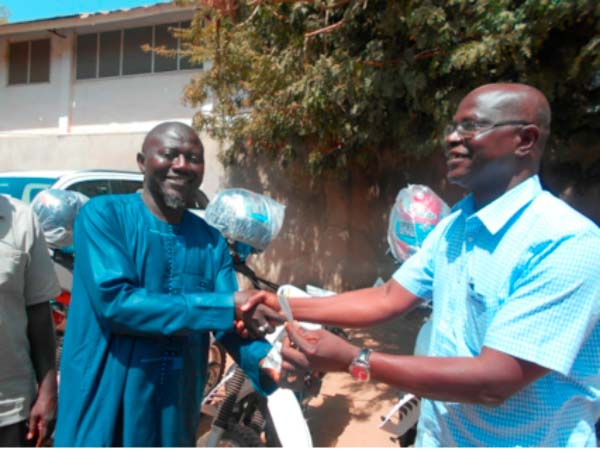
Agricultural
Value Change Development Project (AVCDP) under the Central Project Coordinating
Unit (CPCU) of the Ministry of agriculture Thursday handed over new vehicles
and motorcycles to its implementing partners.
They
included eight motorbikes, a double pickup vehicle and one station wagon which
were procured by the AVCDP.
The
implementing partners were the GLMA, which was given one motorbike; department
of Livestock Services received two motorbikes, while the remaining items were
given to the field staff of the department of Agriculture.
Speaking
at the handing over ceremony, Famara Bully Sanyang, project director AVCDP,
said it is a new project within the ministry of Agriculture.
The
AVCDP is a five-year project for development of the rice value chain and
livestock, which includes all ruminants and poultry, predominantly in the Upper
River Region.
According
to Dr Sanyang, ACVDP is funded by the African Development Bank and was designed
for five years, starting from 2016.
This
was the first package of materials for handing to the main implementing
partners, and there would be more to come in the future to help them to work
directly with the farmers.
“It
is also part of the project activities to buy rice production equipment such as
power tillers and tractors, and also to develop poultry schemes, small ruminant
houses, and many more to come as stipulated in the project document.”
The
purchase of the vehicles and bikes was part of the procurement plans for the
implementation of the project.
CPCU
coordinator Momodou Mbye Jabang said the ministry of Agriculture and the CPCU,
in particular, are proud to be associated with the new vision for development
of the agricultural sector.
It
was the Gambian farmers that put up this new government in a bid to respond to
their clarion call, he added.
Providing
means of mobility by the CPCU and AVCDP was one way of promoting these two
sub-sectors, in particular the rice value chain which is going to develop five
hundred hectares of rice land in the URR, he continued.
Mr
Jabang challenged the beneficiaries, reminding them that where much is given,
much is expected; while he urged them to deliver as expected to attain the
project objectives with diligence and efficiency.

